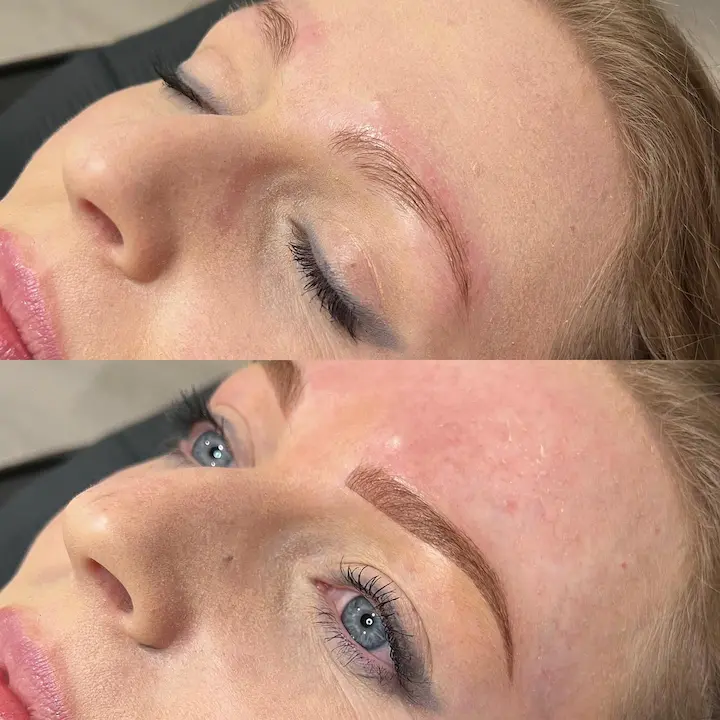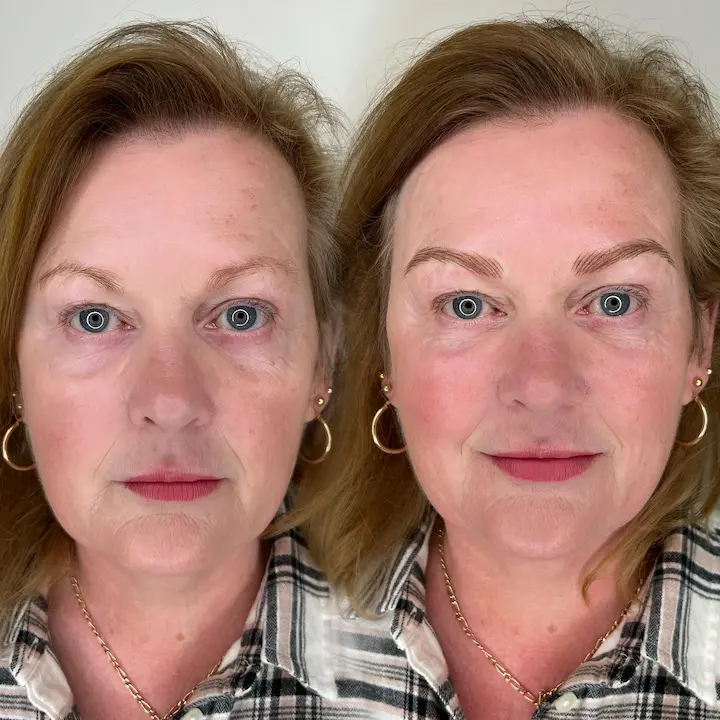The microblading technique has evolved so much over time that many styles and variations are available. With this, you have various options if you consider getting a semi-permanent brow.
Over the years, PMU artists have developed different types of microblading that produce slightly different results. Different types of brows can be made today, which is incredible.
However, it may also be overwhelming when deciding which type of microblading is ideal for you. I can help with that, and you must continue reading this article to get all the information you need.
Let’s look at some of these techniques that can be used for hair stroke brows, along with some patterns.
How Many Types Of Microblading Do We Have?

The traditional technique of microblading involves drawing hair-like strokes using a manual blade, but spin-offs use different tools or combine microblading with other methods.
This article will explain how micro shading, nano blading, nano brows, and pixelblading differ.
Microshading
Microshading is a PMU brow method that involves darkening the brows by applying pigments in tiny dots that combine to produce a powdery look. Although the shade can be applied alone, it’s frequently mixed with microblading strokes.
Various names are given to these arrangements of strokes and shading, such as:
- Microshading
- Combo brows
- Ombre brows (if the shade has a prominent ombre gradient)
- Fusion brows
- Hybrid brows
Essentially, all of these are the same.
Microblading strokes can be applied to the entire arch or only the head of the brows. The spaces between the hairs are shaded using either a machine or a human instrument.
Using strokes and shading together create a more dramatic look than simple microblading.
Additionally, it is better suited for oily skin than simply applying manual strokes because excess sebum might spread and blur the strokes; instead, adding some shading to hide pigment migration is preferable.
Nano Blading
Nano Blading is a form of permanent makeup for the eyebrows that gives an enhancement that lasts up to 2 years without washing off or smudging. The procedure has become very popular in recent years.
Nano Blading is a variation of microblading that involves inserting the so-called strokes into the brow arches between the existing hairs.
They are created by injecting PMU pigments, which are colored, into the skin’s outer layers. The strokes provide a subtle yet powerful boost by blending in with natural hairs.
In nano blading, the strokes are extremely thin, creating real results. As an example of nano blading, consider nano brows, hair stroke brows created with a PMU machine.
Brow artists previously used the terms nano blading and n interchangeably. The PMU community has now agreed that it’s time to make a distinction between the two.
A nanoblade is a manual technique similar to microblading but with one key difference.
In other words, nano blading is microblading with a very thin blade.
The manual microblading technique uses an incredibly small blade. Blades having a diameter of 0.20 to 0.22 mm were commonly used by PMU artists in the past.
Many use 0.18 mm blades, referred to as “nano blades.” These numbers probably don’t mean much to you, but it means a lot to the artists.
For them, it’s a complete technique, using a nano blade with a microblading technique. The reason why it is called nano blading.
Sounds quite easy, right? While most of these artists believe that nano blading is just microblading done with a nano blade, some also refer to their machine-assisted hair stroke process as nano blading.
The two different types of microblading are likely indistinguishable to the untrained eye. However, nano blades are much thinner, produce thinner strokes, and have less danger of spreading pigment, and the brows appear fluffier and more delicate.
Nano Brows
Nano brows are cosmetic eyebrow tattoos that add tiny hair strokes between the existing hairs to give the brows volume and a fuller look. It is carried out using a PMU machine, which only penetrates the skin’s outermost layer as opposed to the deeper layers used in traditional tattooing.
The PMU device has thin needles that quickly go in and out to draw images on the skin and inject colors into them.
To make a stroke, draw these pigment dots very closely together. The PMU machine’s perfect precision, which enables every stroke to be placed where you want it, sets manual microblading apart from digital microblading.
Additionally, machine application is said to be kinder on the skin and less likely to cause severe skin trauma, and colors applied that way last longer on the skin.
Nano brows are the best option for microblading customers with oily and sensitive skin. The results are visible for more than two years; at this point, they gradually fade away if not touched up.
Pixel Blading
Pixel blading uses an unusual blade, which differs from the normal microblading blade. Microblading is done by dragging the blade through the skin – cutting the skin and inserting the pigment.
Pixel blading does not involve cutting the skin. With pixel blading, the pigment is tapped in. Instead of dragging the blade, it is placed against the skin, piercing it and inserting the pigment. It causes piercings rather than cuts.
The results resemble microblading in that hair strokes are produced, but they are made of tiny dots or pixel lines. The spacing between the airy pixel dots is supposed to improve the healing process.
The advantage of this technique is that it is kinder to the skin and better suited for those with oily skin who nonetheless desire hair strokes. Broken-up strokes are only for some; therefore, many people still choose microblading or nano brows, which are even better for oily skin.
Only some artists are currently using this technique for microblading.
Since pigments are tapped in rather than the skin being cut, those who perform it say it’s a gentler version of microblading. But it’s a difficult skill to master, and you can’t match the accuracy and pigment saturation a PMU machine offers.
Different Patterns For Hair Strokes
During microblading, different hair stroke patterns can be created. Every artist has a distinct style, but most of them work hard to create identifiable patterns that clients hear about and want to get.
The two styles that have become well-known and in demand are feather and hyperrealism brows. Let me explain this briefly.
Feather Brow

Feather brows have a fluffy yet neat design. It simply involves adding extra strokes to full natural brows to give them more volume; it is rarely performed on clients with very few to no brow hairs because it can’t give the fluffy effect on its own.
The brow arches are made thicker by the thin, evenly-spaced strokes. They can be done manually or with a machine, and male clientele prefer them.
Hyperrealism Brow

The goal of hyperrealism brows is to make microblading appear less artificial.
Hyperrealism brows are deliberately done in a laid-back, fluffy-to-the-point-of-messy style, with longer strokes that look more like hair clusters than individual hairs. It is done to avoid giving you perfectly defined arches with every hair in its proper place though they touch sometimes.
Because the strokes are so precise, hyperrealism brows can be seen as nano brows because a machine creates them.
Additionally, using a machine enables the drawing of strokes that even touch. Due to the significant risk of pigment migration, this is never done using a manual blade.
The brow arches of hyperrealism are thick and lack a distinct shape. Most men prefer this pattern to any other.
Conclusion
Before deciding on the semi-permanent brow you want, knowing the different types gives you the advantage of making the best choice suitable for your skin.
First off, you must know your skin type. Oily and extremely sensitive skin types should avoid microblading. The style you select after that depends entirely on your preferences.
